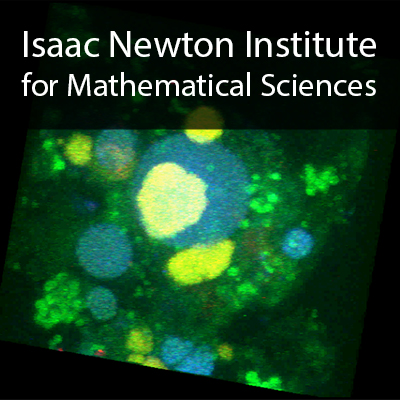Plenary Lecture 9: Computation and Polymer Synthesis for Designer Quorum Sensing Behaviour
32 mins 32 secs,
188.32 MB,
WebM
640x360,
29.97 fps,
44100 Hz,
790.31 kbits/sec
Share this media item:
Embed this media item:
Embed this media item:
About this item

| Description: |
Krasnogor, N (Newcastle University)
Thursday 27 November 2014, 11:55-12:30 |
|---|
| Created: | 2014-12-02 11:53 |
|---|---|
| Collection: | Understanding Microbial Communities; Function, Structure and Dynamics |
| Publisher: | Isaac Newton Institute |
| Copyright: | Krasnogor, N |
| Language: | eng (English) |
| Distribution: |
World
|
| Explicit content: | No |
| Aspect Ratio: | 16:9 |
| Screencast: | No |
| Bumper: | UCS Default |
| Trailer: | UCS Default |
| Abstract: | Bacteria deploy a range of chemistries to regulate their behaviour and respond to their environment. Quorum sensing is one method by which bacteria use chemical reactions to modulate pre-infection behaviour such as surface attachment. A combination of polymer and analytical chemistry, biological assays and computational modelling has been used to characterize the feedback between bacteria clustering and quorum sensing signalling. We have also derived design principles and chemical strategies for controlling bacterial behaviour at the population level. In this talk I will summarise our work on the utilisation of computational modelling for the design of synthetic polymers affecting QS phenotypes and, , time permitting, the combinatorial DNA library design tool (DNALD). |
|---|---|
Available Formats
| Format | Quality | Bitrate | Size | |||
|---|---|---|---|---|---|---|
| MPEG-4 Video | 640x360 | 1.93 Mbits/sec | 472.72 MB | View | Download | |
| WebM * | 640x360 | 790.31 kbits/sec | 188.32 MB | View | Download | |
| iPod Video | 480x270 | 522.02 kbits/sec | 124.32 MB | View | Download | |
| MP3 | 44100 Hz | 249.78 kbits/sec | 59.55 MB | Listen | Download | |
| Auto | (Allows browser to choose a format it supports) | |||||

